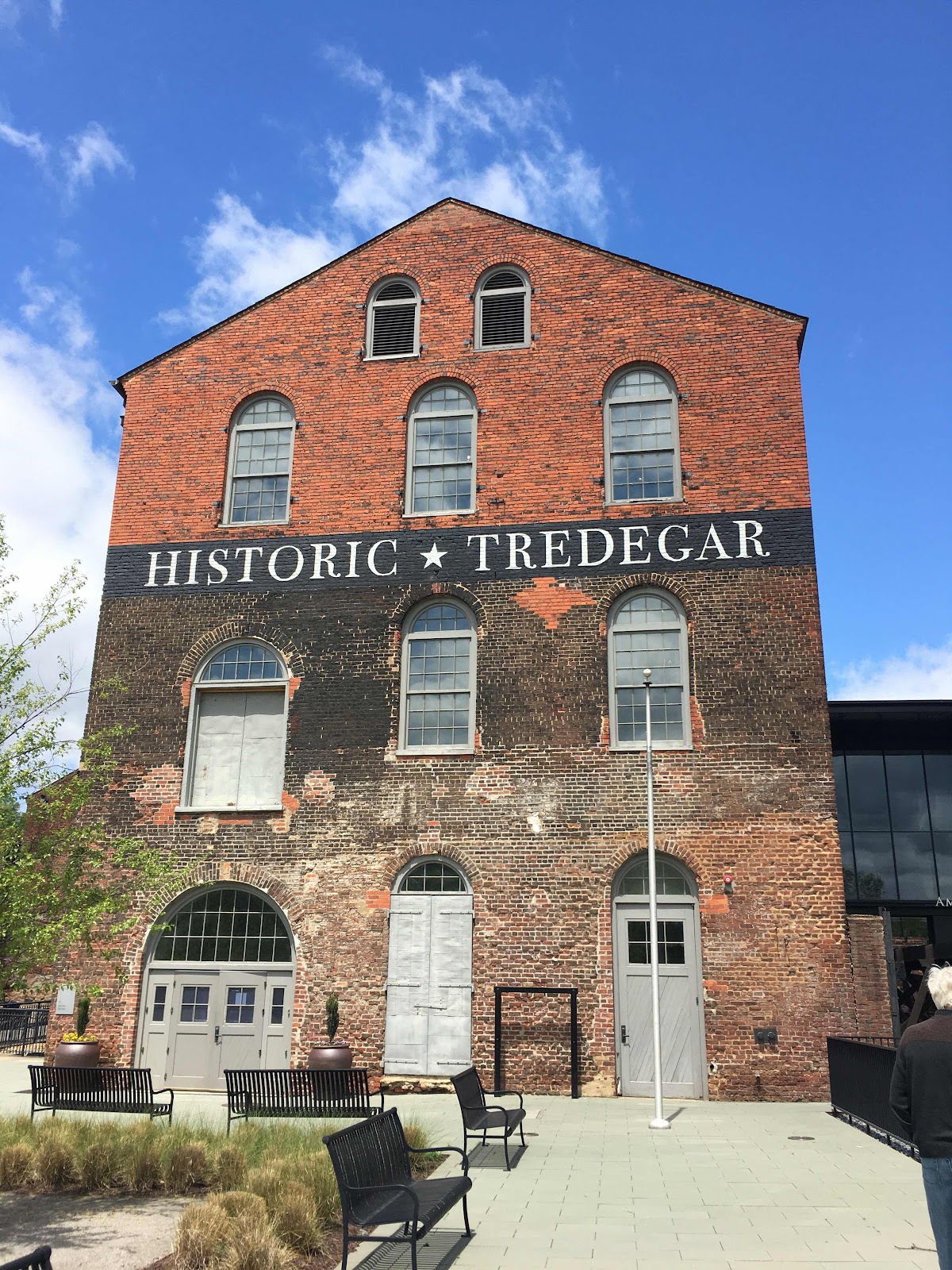On Sunday, we spent the day in Richmond, Virginia.

A good friend of Rob’s from Medical School is a lifelong resident of Richmond. He met us in front of the American Civil War Museum located at the site of the historic Tredegar Iron Works and gave us an overview of Richmond. He also provided a really interesting perspective of the South’s “Lost Cause” narrative as he thinks back on his own education in Virginia.

Chartered in 1837, Tredegar Iron Works was a major supplier of armament to the Confederacy during the Civil War. The foundry cast more than 1000 cannons for Lee’s troops. In addition, the foundry turned out heavy iron plates for Confederate naval vessels, including the Merrimack, the world’s first armored warship.
The museum was excellent! Richmond served as the capital of the Confederate States of America for almost the whole of the American Civil War. It was a vital source of weapons and supplies for the war efforts and it was the terminus of five railroads. The Union made many attempts to invade Richmond throughout the course of the war. Finally, in 1864-65, General Grant laid siege to nearby Petersburg. By April 1865, Lee’s army had suffered a major defeat and retreated under heavy fire. The Confederate government fled Richmond on Lee’s recommendation lest they be captured. Rob’s friend told us that growing up he heard that the “Yanks burned the city of Richmond.” Now, historians know that the retreating Confederates chose to burn the military supplies as well as the tobacco & whiskey warehouses rather than let them fall into Union hands. The resulting fire destroyed much of central Richmond.

The museum had exhibits that attempted to show three different perspectives for the events that occurred in Richmond - the Union perspective, the Confederate perspective, and the African American perspective.
The other interesting thing about Richmond is the connection of the murder of George Floyd in Minnesota to Richmond’s Monument Avenue. Monument Avenue is a tree-lined avenue named for its structures honoring those who fought for the Confederacy. In the wake of the protests that followed the killing of George Floyd, the Jefferson Davis monument was torn down by protestors, while the Lee monument was ordered removed by Governor Ralph Notham. In July 2020, Richmond Mayor Levar Stoney directed the removal of the remaining Confederate monuments on city-owned land including J.E.B. Stuart, Stonewall Jackson, and Matthew Fontaine Maury.
The only things left from those monuments are the pedestals and now officials are trying to find a “more appropriate” place to put the actual statues.
General Lee’s statue in Richmond, Virginia is a visible reminder of how the underlying divisions that led to the Civil War are still alive today. During the summer of racial reckoning in 2020, the statue of General Lee became a place for Black Lives Matters protests. While some see the transformation of the statue as an influential work of “protest art,” others deplore the destruction. In Virginia, the dramatic outburst of defacement and officially sanctioned removal of monuments has split in public opinion. A September 2020 Associated Press poll found that 46% of Virginians are in favor of removal and 42 percent are opposed. Litigation over the Lee statue has now reached the Supreme Court of Virginia. And now because the principles of governing contracts are involved, the monument’s ultimate fate could end up in the hands of the U.S. Supreme Court.

Thanks for giving us insight into the Civil War! Great descriptions of the historical events and their impact on national views and current events and relationships.
ReplyDelete